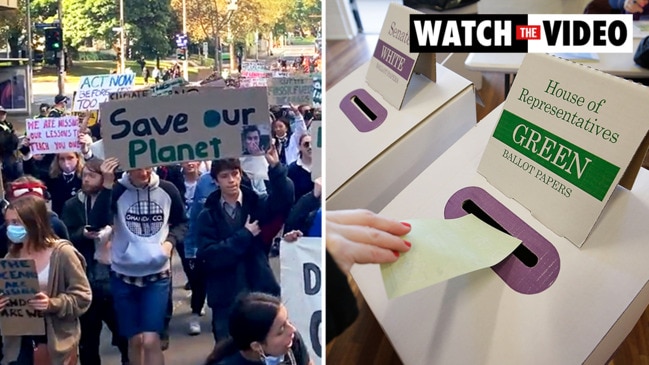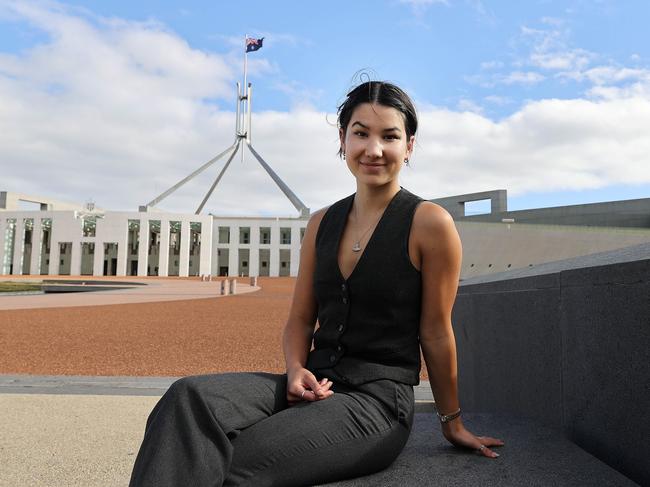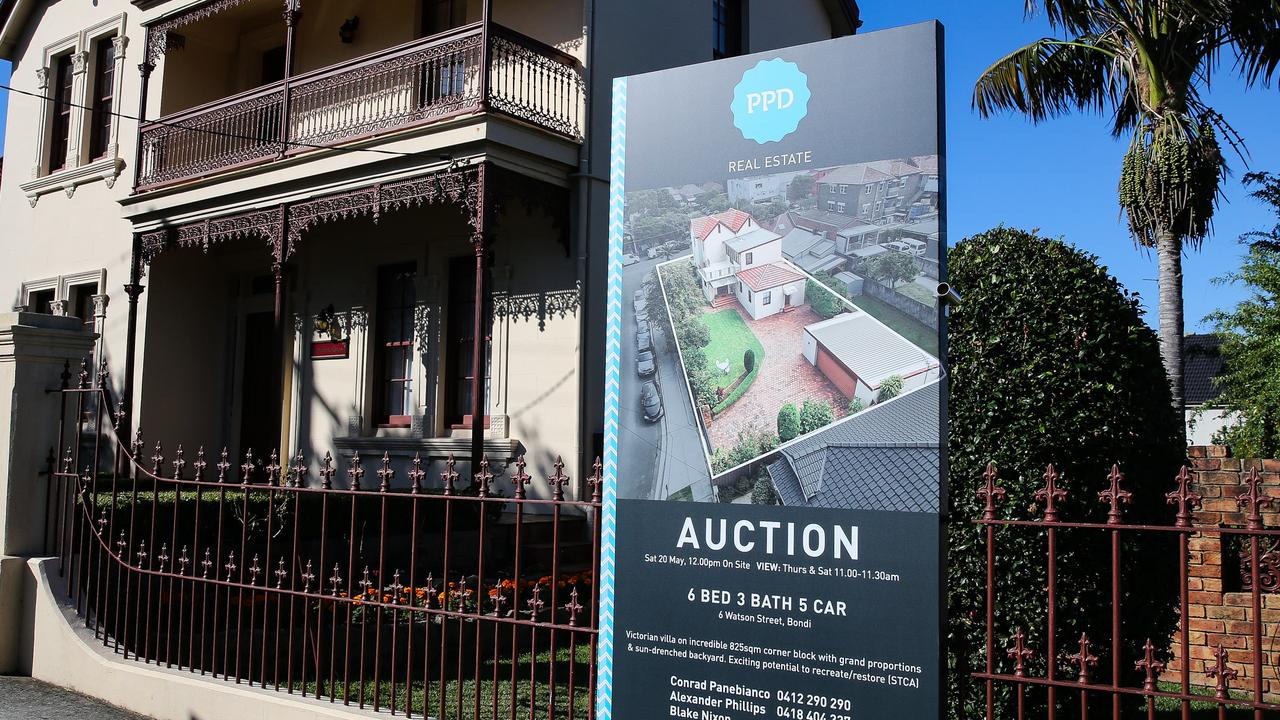Federal Election 2022: What the ‘youth vote’ really means
Some School Strike 4 Climate members will be voting for the first time – but their influence will depend on one crucial factor.

Federal Election
Don't miss out on the headlines from Federal Election. Followed categories will be added to My News.
They’ve absconded from their classrooms and protested on city streets, but as the first School Strikers 4 Climate come to voting age, a leading political scientist has cautioned against breathless predictions about their impact in the May federal election.
Australian Electoral Commissioner Tom Rogers said 600,000 Australians had enrolled to vote since the 2019 federal election, and half of them were people who were aged 18.
“We tend to talk disproportionately about a potential ‘youthquake’ or some kind of youth led landslide, and it just hasn’t ever happened in Australian politics,” Dr Jill Sheppard from the School of Politics and International Relations at ANU said.
“This isn’t because young voters are disengaged, or because they don’t have a very good sense of what they want. But what we see from voters between 18 and 29, say, is that they don’t vote that much differently to people in their 40s or 50s,” she said.
And yet in opinion polls, young voters seem very different to other generations. Survey after survey reveals them to be significantly more concerned about climate change and housing affordability than the average Australian voter, and slightly less concerned on the whole about the cost of living or the state of the economy.

In recent research conducted by the Climate Council, in which nearly 1300 respondents were invited to rank the federal government’s performance on climate change and extreme weather, Generation Z voters (aged 18-25) marked them more harshly than any other age cohort, giving them 1.5 out of ten.
The warming planet is a primary concern for former School Strike 4 Climate organiser Aimee Griffith, who will be voting for the first time this May, having just turned 18.
“Obviously climate change is at the forefront of my mind,” the first year ANU law and politics student said. “I’ll be wanting to look and compare the parties, not just on their stance on climate change, but the tangible plans and policies that they’ve put in place already or that they’re proposing.”
Ms Griffith said housing affordability, job security, higher education funding and indigenous issues would also factor into her vote.
There was a “misconception” young people didn’t care about politics, Ms Griffith said, but this had not been her experience.
“In the School Strike 4 Climate I was speaking to a lot of high school students, as young as 12, and I found the people that don’t have the vote and aren’t able to vote are so keen to have their voices and contributions heard and to be included in policy decisions,” she said.

But those concerns are often ignored by our political system, Dr Sheppard said.
“Young people’s concerns are almost never brought up,” said Dr Sheppard. “They’re disproportionately concerned about climate change, the environment generally, housing affordability and job security – and these are issues that neither major party is really talking about.”
Labor’s foray into the housing affordability debate in 2019 was brief, Dr Sheppard said, and their loss at that election “probably set that cause back another one two elections”.
“So young voters in Australia remain a considerable proportion of the population who just do not get listened to under our electoral system,” she said.


But it would seem one of the reasons why young people don’t rock the vote quite as much as they might be expected to is because not all of them enrol.
While about 96 per cent of the eligible Australian voting population are on the electoral roll, for the 18-24 age cohort that percentage dropped to about 88 per cent in the 2019 federal election.
Mr Rogers said he expected youth enrolment this election to reach and perhaps surpass the 2019 figure.
New voters have until the end of Monday to enrol with the AEC.
Originally published as Federal Election 2022: What the ‘youth vote’ really means





